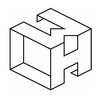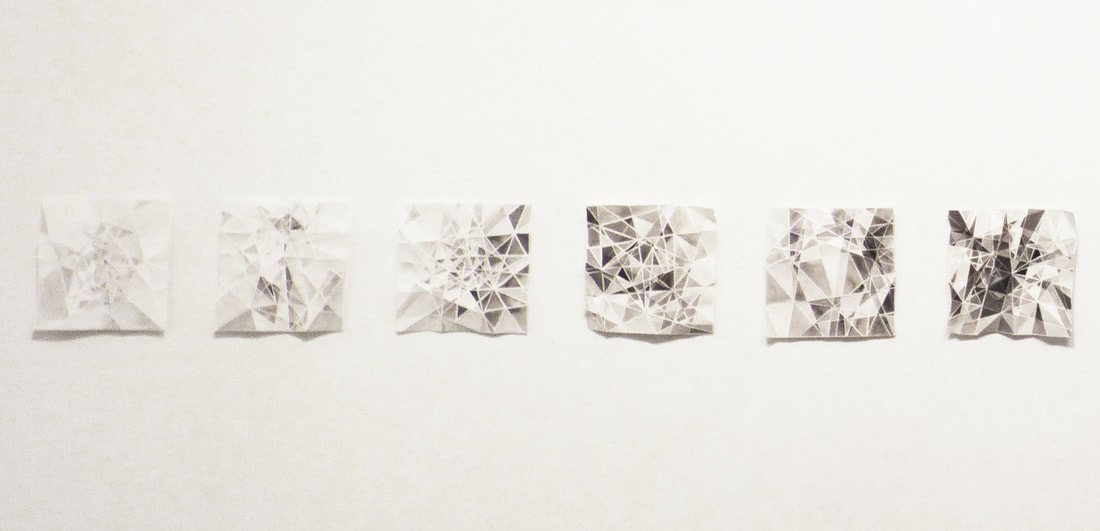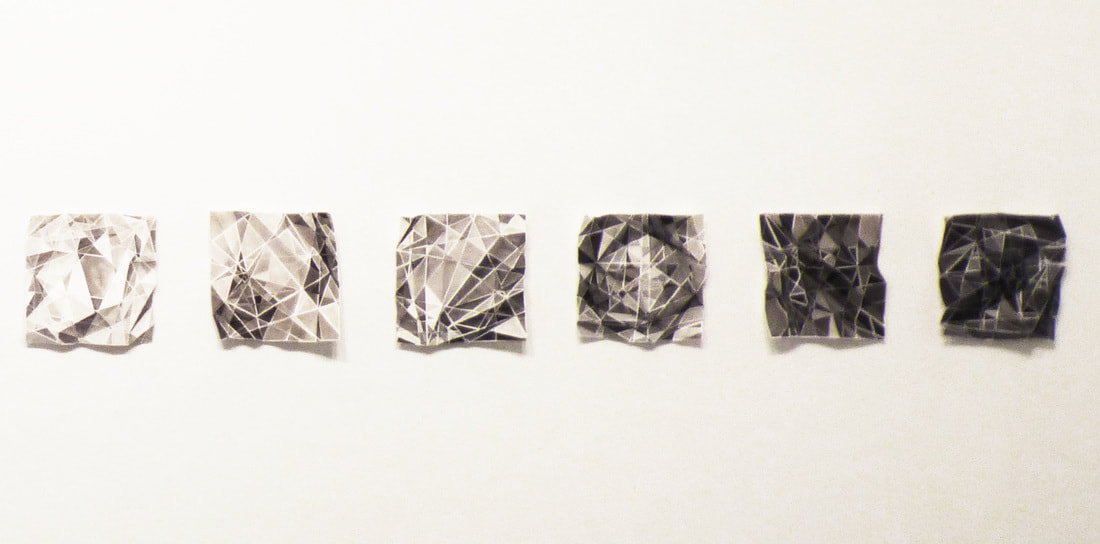THE EDGE OF A PLANE
SHARON ARNOLD
DECEMBER 2013
This is the accompanying curatorial essay for Cristin Ford's solo show Planar Visions at Bridge Productions/LxWxH in 2013.
For a long while, you may find you're trying to place yourself amidst an unfamiliar network of configurations. Are they islands? Are they structures? If there were a marker to indicate “you are here”, where would you be?
In her solo exhibition at Bridge Productions/LxWxH, Ford presents a cohesive but varied body of work. Her series of folded paper sculptures represent a gradient, which float against the wall in a kind of delicate bas-relief. Sharp edges, creased points, inked and fractured facets play with the idea of how a single value can carry multiple values within it; each of them adding to a sum total of color averaging on a scale of white to black.
Her acrylic sculptures recall a larger project for which she created an entire window-sized structural map resembling that of a city, aptly titled PlastiCity. With these smaller versions, Ford continues to explore the vertical form of skyscrapers and city skylines on their sides – projecting like sideways stalagmites and stalactites; their cantilevered spires reaching out towards you. They mimic the growth that man-made structures in turn mimic in nature.
Ford's centerpiece is a site-specific installation along three walls under the gallery's skylight. Built-up layers of ink, line and shape build an environmental topography to engulf the viewer in a fictional landscape that is at once reminiscent of a bird's-eye view of islands, but also of sounding or elevation maps. The “islands” are constructed of folded paper which jut out from the wall like the fins of an airplane; sharp, angular, and aerodynamic.
If Cristin Ford's topographies do not necessarily seek to define or describe; it is what they redact or omit in an eloquent summary of edited information that draws you in. They incorporate texture, quantity, and form. They are a compositional study of value scale via prismatic shapes. Their documentation is less about location, and more about signifier.
This is a simulation. This is the edge.
For a long while, you may find you're trying to place yourself amidst an unfamiliar network of configurations. Are they islands? Are they structures? If there were a marker to indicate “you are here”, where would you be?
In her solo exhibition at Bridge Productions/LxWxH, Ford presents a cohesive but varied body of work. Her series of folded paper sculptures represent a gradient, which float against the wall in a kind of delicate bas-relief. Sharp edges, creased points, inked and fractured facets play with the idea of how a single value can carry multiple values within it; each of them adding to a sum total of color averaging on a scale of white to black.
Her acrylic sculptures recall a larger project for which she created an entire window-sized structural map resembling that of a city, aptly titled PlastiCity. With these smaller versions, Ford continues to explore the vertical form of skyscrapers and city skylines on their sides – projecting like sideways stalagmites and stalactites; their cantilevered spires reaching out towards you. They mimic the growth that man-made structures in turn mimic in nature.
Ford's centerpiece is a site-specific installation along three walls under the gallery's skylight. Built-up layers of ink, line and shape build an environmental topography to engulf the viewer in a fictional landscape that is at once reminiscent of a bird's-eye view of islands, but also of sounding or elevation maps. The “islands” are constructed of folded paper which jut out from the wall like the fins of an airplane; sharp, angular, and aerodynamic.
If Cristin Ford's topographies do not necessarily seek to define or describe; it is what they redact or omit in an eloquent summary of edited information that draws you in. They incorporate texture, quantity, and form. They are a compositional study of value scale via prismatic shapes. Their documentation is less about location, and more about signifier.
This is a simulation. This is the edge.


